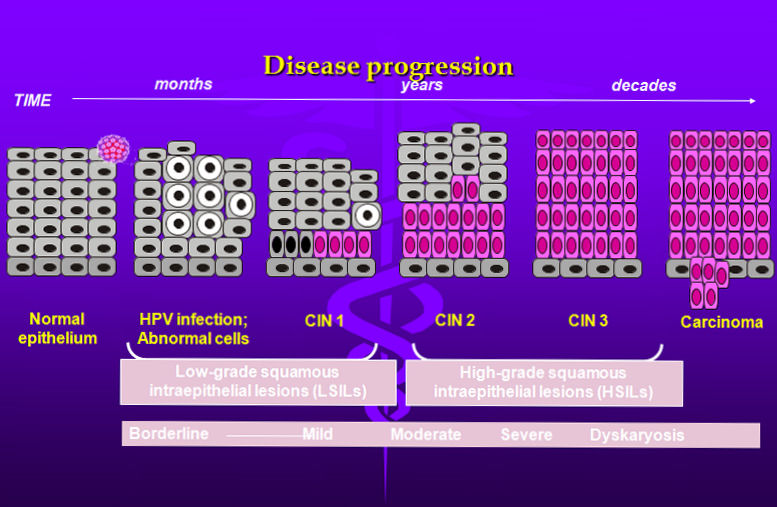

If high-risk HPV is found on your cervical screening sample (cervical smear), your sample will be looked at under a microscope for cell changes. If there are no cell changes (dyskaryosis), you will be invited back for cervical screening in 1 year. This is to make sure the HPV has cleared.
If high-risk HPV and cell changes (dyskaryosis) are found, you will be invited to have a colposcopy.
Dyskaryosis is another word for cell changes. Your results letter may also say if the cell changes are borderline, low grade or high grade, and it will tell you the next steps.
The areas of changed cells on cervical biopsies are known as cervical intraepithelial neoplasia, or CIN. CIN is graded on a scale of 1 to 3. Low-grade dyskaryosis is associated with the grade CIN 1. High grade dyskaryosis is associated with the grades CIN 2 and CIN 3. Not all cell changes develop into cervical cancer, but it is important that they are monitored by colposcopy and treated if needed.
Mr Sanusi is a BSCCP accredited Colposcopist with over 25 years of experience in performing colposcopy to investigate, diagnose and treat CIN. High grade CIN is treated by loop excision biopsy (LLETZ) under local anaesthetic.
To find out more about Colposcopy click here or to book a private appointment click here.
